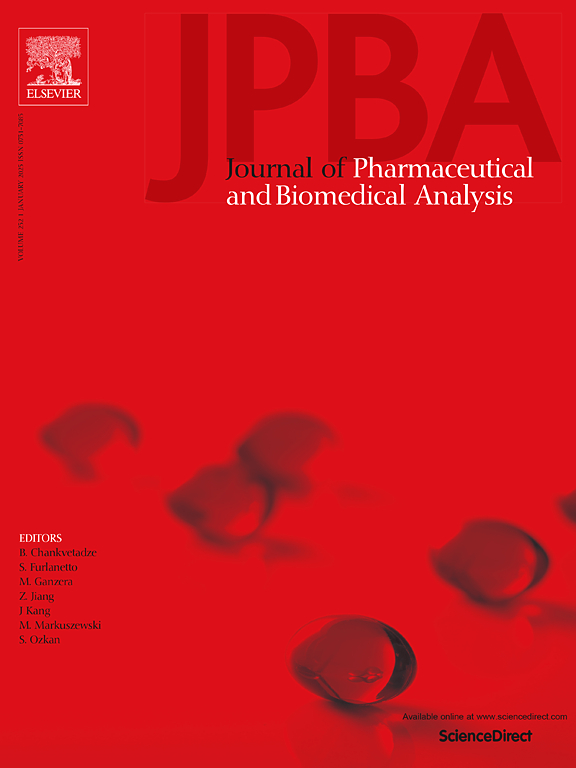Development and validation of an LC–MS/MS method for pharmacokinetic assessment of a bispecific antibody (YBSW015) targeting SARS-CoV-2
IF 3.1
3区 医学
Q2 CHEMISTRY, ANALYTICAL
Journal of pharmaceutical and biomedical analysis
Pub Date : 2025-02-25
DOI:10.1016/j.jpba.2025.116770
引用次数: 0
Abstract
YBSW015 is a bispecific antibody that targets severe acute respiratory syndrome coronavirus 2 (SARS-CoV-2). A pair of high-affinity parental monoclonal antibodies (B38 and H4) were discovered from the sera of convalescent patients, and YBSW015 was developed based on these two parental antibodies. To support pharmacokinetic research, a simple, specific and reproducible liquid chromatography-tandem mass spectrometry (LC-MS/MS) method was developed and validated for the quantifying YBSW015 in human serum. Two signature peptides (SPs) were selected as surrogate analytes for quantification and qualitative detection, respectively. Two stable isotope-labeled synthetic peptides with the same sequence of two SPs were set as internal standards (ISs). Total antibody was precipitated with 1.0 % (w/v) trichloroacetic acid (TCA) in isopropanol (IPA) following by trypsin enzymatic and further purified by solid phase extraction (SPE). The performance of this bioanalytical assay was well evaluated with respect to linearity, accuracy and precision, selectivity, specificity, matrix effect, recovery, and stability. YBSW015 concentrations in human serum were determined over the concentration range of 2.00–1000 μg/mL, and the quantification was not interfered by the matrix components and pre-existing antibodies. This precise and sensitive method was successfully employed in a phase I clinical study.
求助全文
约1分钟内获得全文
求助全文
来源期刊
CiteScore
6.70
自引率
5.90%
发文量
588
审稿时长
37 days
期刊介绍:
This journal is an international medium directed towards the needs of academic, clinical, government and industrial analysis by publishing original research reports and critical reviews on pharmaceutical and biomedical analysis. It covers the interdisciplinary aspects of analysis in the pharmaceutical, biomedical and clinical sciences, including developments in analytical methodology, instrumentation, computation and interpretation. Submissions on novel applications focusing on drug purity and stability studies, pharmacokinetics, therapeutic monitoring, metabolic profiling; drug-related aspects of analytical biochemistry and forensic toxicology; quality assurance in the pharmaceutical industry are also welcome.
Studies from areas of well established and poorly selective methods, such as UV-VIS spectrophotometry (including derivative and multi-wavelength measurements), basic electroanalytical (potentiometric, polarographic and voltammetric) methods, fluorimetry, flow-injection analysis, etc. are accepted for publication in exceptional cases only, if a unique and substantial advantage over presently known systems is demonstrated. The same applies to the assay of simple drug formulations by any kind of methods and the determination of drugs in biological samples based merely on spiked samples. Drug purity/stability studies should contain information on the structure elucidation of the impurities/degradants.

 求助内容:
求助内容: 应助结果提醒方式:
应助结果提醒方式:


